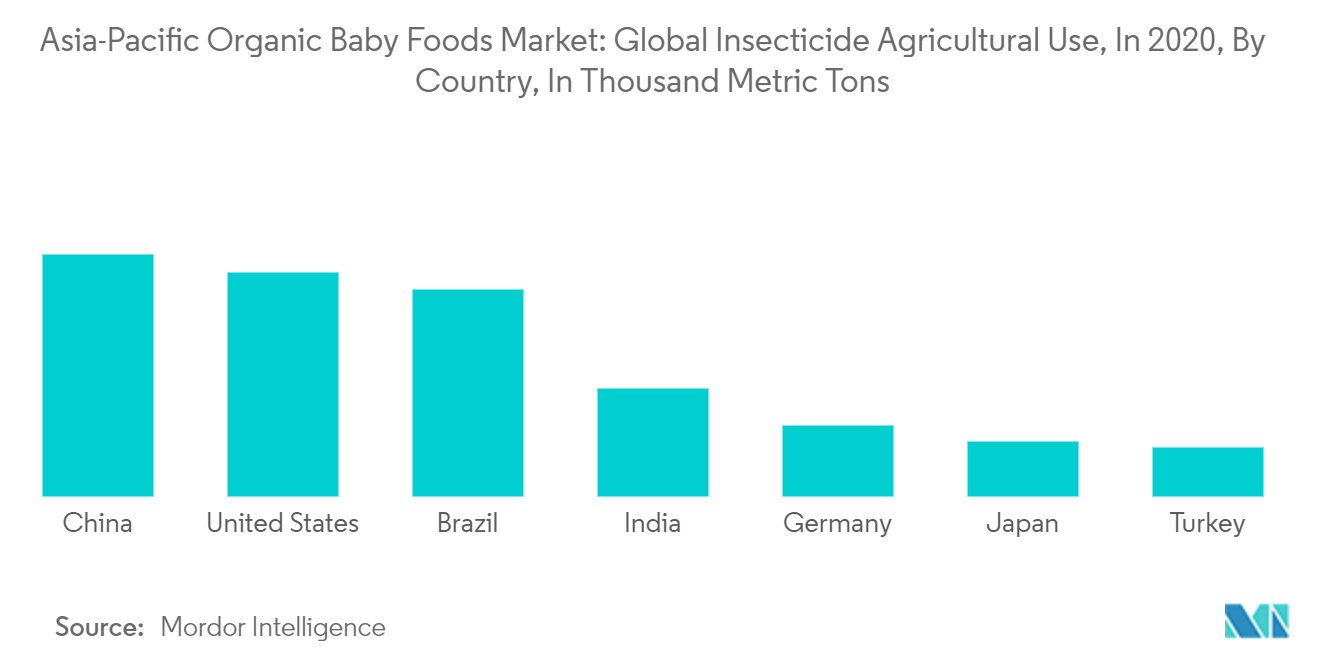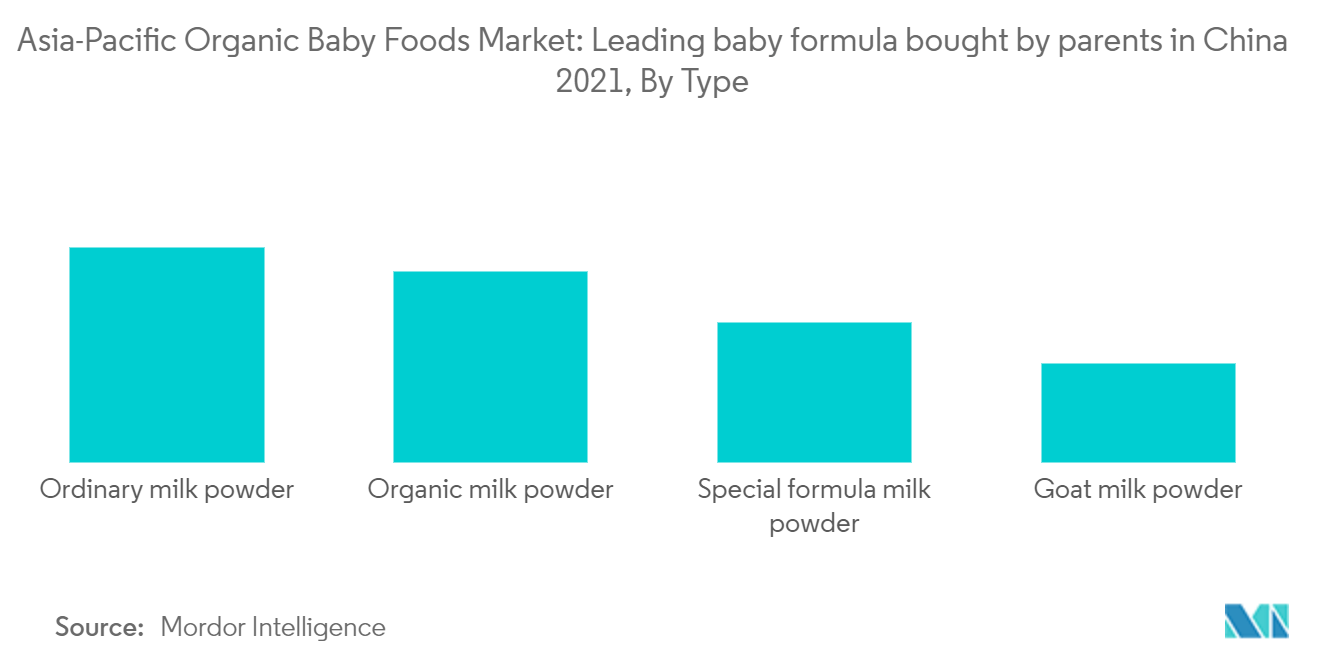Market Trends of Asia-Pacific Organic Baby Food Industry
This section covers the major market trends shaping the APAC Organic Baby Food Market according to our research experts:
Resistance toward Conventional Baby Foods
The increased spraying of pesticides and other chemicals to improve the yield of products is deteriorating the overall quality of the food product. With consumer knowledge of the health consequences associated with pesticides, insecticides, and other chemical residues found in food, there is an increase in demand for natural and organic foods. According to FAO, In 2020, China was the largest insecticide-consuming country worldwide at 70 thousand metric tons. With the high use of chemicals, consumers are more inclined toward products that have clean labels and contain a lower level of synthetic ingredients to ensure food safety.
Moreover, the sustainability concerns of the parents have led manufacturers to develop carbon-neutral organic products. For instance, in July 2022, Nestle SA launched its first carbon-neutral toddler formula, a stage three formula for toddlers said to be sourced from Switzerland-based farms that do not use herbicides and growth hormones. The product is offered for toddlers of age 12-36 months and was launched online in China.

Milk Formulas hold a Significant Share
Parents are now choosing food for their babies more carefully. They look for ones that are free of chemicals, artificial ingredients, additives, added flavors, etc. The presence and availability of organic baby food and its closeness to breast milk are some of the driving factors for organic milk powders. The rising organic infant formula market relies on suboptimal breastfeeding rates, the substituting of breast milk at the early stage, and increased fertility rates.
China holds a significant market share of the Asia-Pacific organic baby food market. The increasing population, rise in working women and hectic work schedules, and insufficient breast milk is driving the sales of organic baby foods. Consumers in China are focusing on baby food with immunity-boosting ingredients. For instance, in August 2022, China's Junlebao Dairy Group launched a new infant formula that mimics breast milk. The company claims that it contains one of the highest lactoferrin content in the market to meet the demand of parents looking for immune health benefits.


